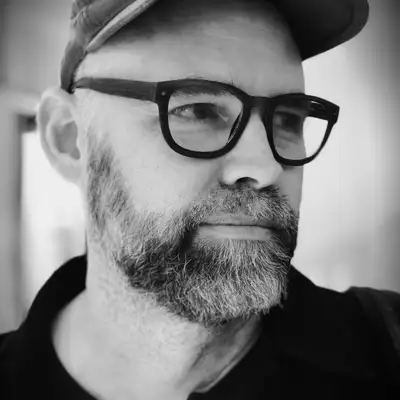
Trapped ions on the cloud with Thomas Monz from AQT
Thomas Monz, CEO of AQT (Alpine Quantum Technologies), joins Sebastian Hassinger on The New Quantum Era to chart the evolution of ion-trap quantum computing — from the earliest breakthroughs in Innsbruck to the latest roll-outs in supercomputing centers and on the cloud. Drawing on a career that spans pioneering research and entrepreneurial grit, Thomas details how AQT is bridging the gap between academic innovation and practical, scalable systems for real-world users. The conversation traverses AQT’s trajectory from component supplier to systems integrator, how standard 19-inch racks and open APIs are making quantum computing accessible in Europe’s top HPC centers, what Thomas anticipates from AQT launching on Amazon Braket, a quantum computing service from AWS, and what it will take for quantum to deliver genuine economic value.
Guest Bio
Thomas Monz is the CEO and co-founder of AQT. A physicist by training, his work has helped transform trapped-ion quantum computing from a fundamental research topic into a commercially viable technology. After formative stints in quantum networks, high-precision measurement, and hands-on engineering, Thomas launched AQT alongside Peter Zoller and Rainer Blatt to make robust, scalable quantum computers available far beyond the university lab. He continues to be deeply engaged in both hardware development and quantum error correction research, with AQT now deploying systems at EuroHPC centers and bringing devices to Amazon Braket.
Key Topics
Guest Bio
Thomas Monz is the CEO and co-founder of AQT. A physicist by training, his work has helped transform trapped-ion quantum computing from a fundamental research topic into a commercially viable technology. After formative stints in quantum networks, high-precision measurement, and hands-on engineering, Thomas launched AQT alongside Peter Zoller and Rainer Blatt to make robust, scalable quantum computers available far beyond the university lab. He continues to be deeply engaged in both hardware development and quantum error correction research, with AQT now deploying systems at EuroHPC centers and bringing devices to Amazon Braket.
Key Topics
- From research prototype to rack-ready: How the pain points converting lab experiments into user-friendly hardware led AQT to build its quantum computers in the same form factors and standards as classical infrastructure, making plug-and-play integration with the supercomputing world possible.
- Hybrid quantum–HPC deployments: Why systems-level thinking and classic IT lessons (such as respecting 19-inch rack and power standards) have enabled AQT to place ion-trap quantum computers in Germany and Poland as part of the EuroHPC initiative — and why abstraction at the API level is essential for developer adoption.
- Error correction and code flexibility: How the physical properties of trapped ions let AQT remain agnostic to changing error-correcting codes (from repetition and surface codes to LDPC), enabling swift adaptation to new breakthroughs via software rather than expensive new hardware — and why end-users should never have to think about error correction themselves.
- Scaling and networking: The challenges moving from one-dimensional to two-dimensional traps, the emerging role of integrated photonics, and AQT’s vision for interconnecting quantum computers within and across HPC sites using telecom-wavelength photons.
- From local to cloud: What AQT’s move to Amazon Braket means for the range and sophistication of end-user applications, and how broad commercial access is shifting priorities from scientific exploration to real-world performance and customer-driven features.
- Collaboration as leverage: How AQT’s open approach to integration—letting partners handle job scheduling, APIs, and orchestration—positions it as a technology supplier while benefiting from advances across Europe’s quantum ecosystem.
Why It Matters
AQT’s journey illustrates how “physics-first” quantum innovation is finally crossing into scalable, reliable real-world systems. By prioritizing integration, user experience, and abstraction, AQT is closing the gap between experimental platforms and actionable quantum advantage. From better error rates and hybrid deployments to global cloud infrastructure, the work Thomas describes signals a maturing industry rapidly moving toward both commercial impact and new scientific discoveries.
Episode Highlights
- How Thomas’s PhD work helped implement the first three-qubit ion-trap gates and formed the foundation for AQT’s technical strategy.
- The pivotal insight: moving from bespoke lab systems to standardized products allowed quantum hardware to be deployed at scale.
- The surprisingly smooth physical deployment of AQT machines across Europe, thanks to a “box-on-a-truck” design.
- Real talk on error correction, the importance of LDPC codes, and the flexibility built into trapped-ion architectures.
- The future of quantum networking: sending entangled photons between HPC facilities, and the promise of scalable cluster architectures.
- What cloud access brings to the roadmap, including new end-user requirements and opportunities for innovation in error correction as a service.
----
This episode offers an insider’s perspective on the tight coupling of science and engineering required to bring quantum computing out of the lab and into industry. Thomas’s journey is a case study in building both technology and market readiness — critical listening for anyone tracking the real-world ascent of quantum computers. In the spirit of full disclosure, Sebastian is an employee of AWS, working on quantum computing for the company, though he is not a member of the Braket service team.

